What tally sticks tell us about how money works
- Published
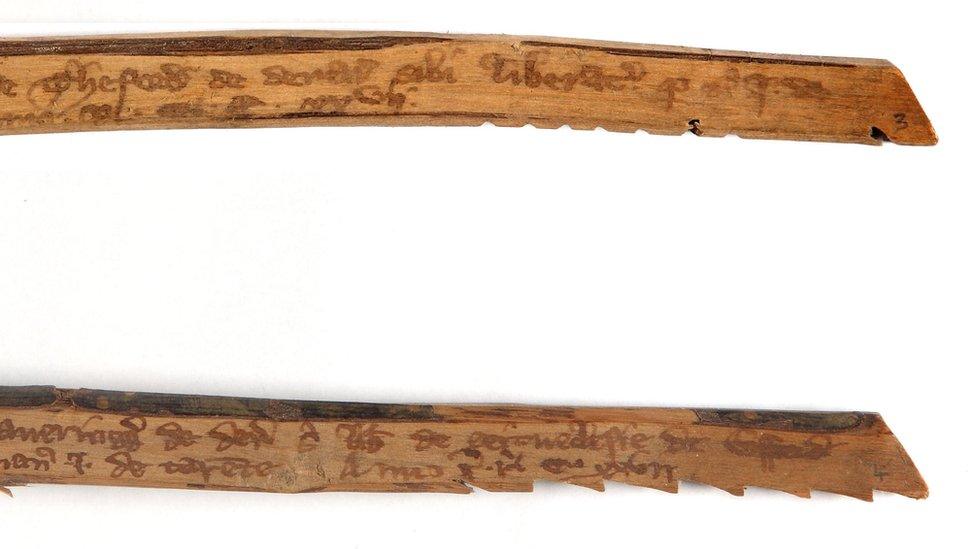
Tally sticks, circa 1299, showing accounts of the bailiff of Ralph de Manton of Ufford Church, Northampton
Not far from where I live is Oxford's Ashmolean Museum, home to art and antiquities from around the world. I often find myself slipping down the stairs to the money gallery in its grand basement.
You can see coins from Rome, the Vikings, the Abbasid Caliphate and, closer to home, from medieval Oxfordshire and Somerset.
But while it seems obvious that the money gallery would be full of coins, most money isn't in the form of coins at all.
The trouble is, as Felix Martin points out in his book, Money: The Unauthorised Biography, that most of our monetary history hasn't survived in a form that could grace a museum.


50 Things That Made the Modern Economy highlights the inventions, ideas and innovations which have helped create the economic world in which we live.
It is broadcast on the BBC World Service. You can find more information about the programme's sources and listen online or subscribe to the programme podcast.

In fact, in 1834, the British government decided to destroy 600 years of precious monetary artefacts. It was a decision that was to have unfortunate consequences in more ways than one.
The artefacts in question were humble sticks of willow, about eight inches (20cm) long, called Exchequer tallies. The willow was harvested along the banks of the Thames, not far from the Palace of Westminster in central London.
Foils and stocks
Tallies were a way of recording debts with a system that was sublimely simple and effective.
The stick would contain a record of the debt, for example: "£9 4s 4d from Fulk Basset for the farm of Wycombe". Fulk Basset was a Bishop of London in the 13th Century. He owed his debt to King Henry III.
Now comes the elegant part.
The stick would be split in half, down its length from one end to the other. The debtor would retain half, called the "foil". The creditor would retain the other half, called the "stock" - even today, British bankers use the word "stocks" to refer to debts of the British government.
Because willow has a natural and distinctive grain, the two halves would match only each other.
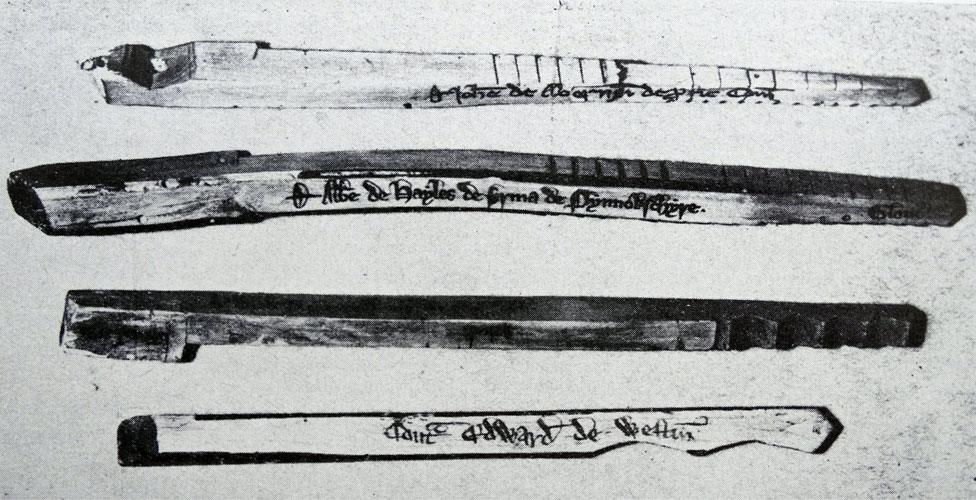
Some of the old wooden tally sticks used by the UK Exchequer until 1826
Of course, the Treasury could simply have kept a record of these transactions in a ledger somewhere. But the tally stick system enabled something radical to occur.
If you had a tally stock showing that Bishop Basset owed you £5, then unless you worried that he wasn't good for the money, the tally stock itself was worth close to £5 in its own right.
If you wanted to buy something, you might well find that the seller would be pleased to accept the tally stock as a safe and convenient form of payment.
So the tally sticks themselves became a kind of money, a particular sort of debt that could be traded freely, circulating from person to person until it utterly separated from Bishop Basset and a farm in Wycombe.
The Irish experience
We don't have a good sense of whether tally sticks were in fact widely traded or not, for reasons that will become clear. But we know that similar debts were, some surprisingly recently.
On Monday 4 May 1970, the Irish Independent, Ireland's leading newspaper, published a matter-of-fact notice with a straightforward title: Closure of banks.
Every major bank in Ireland was closed and would remain closed until further notice. The banks were in dispute with their own employees, who had voted to strike, and it seemed likely that the whole business would drag on for weeks or even months.
You might think that such news - in what was one of the world's more advanced economies - would inspire utter panic, but the Irish remained calm. They'd been expecting trouble, so had been stockpiling reserves of cash, but what kept the Irish economy going was something else.
The Irish wrote each other cheques.
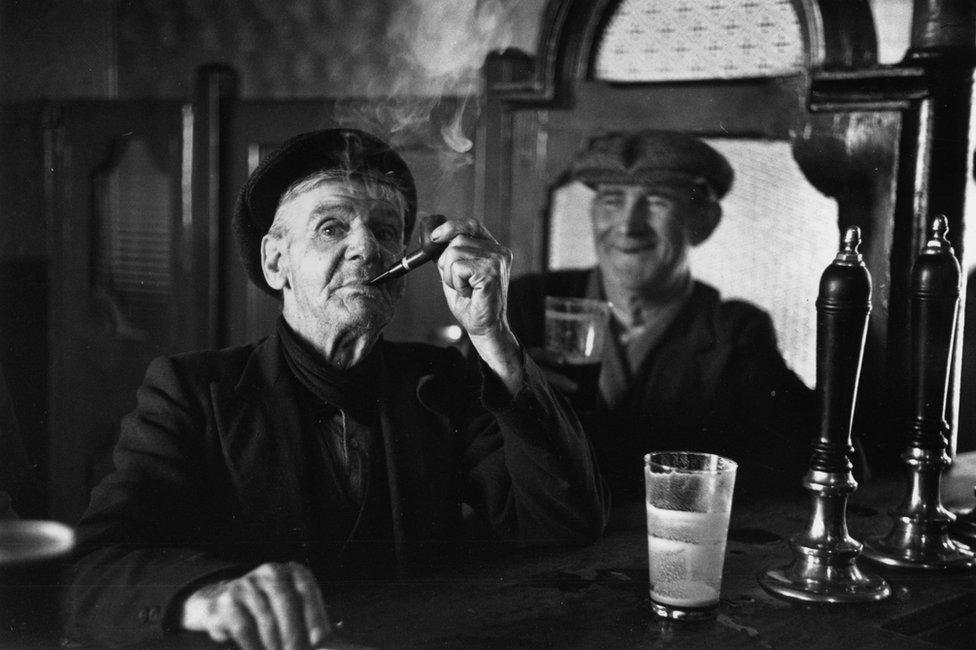
People used cheques to cover expenses like bar bills, and publicans reused them to pay their suppliers
Now, at first sight this makes no sense.
Cheques are paper-based instructions to transfer money from one bank account to another. But if both banks are closed, then the instruction to transfer money can't be carried out - not until the banks open, anyway. But everyone in Ireland knew that might not happen for months.
Nevertheless, people wrote each other cheques, and they circulated. Patrick would write a cheque for £20 to clear his tab at the local pub. The publican might then use that cheque to pay his staff, or his suppliers.
Patrick's cheque would circulate around and around, a promise to pay £20 that couldn't be fulfilled until the banks reopened and started clearing the backlog.
Taken on trust
The system was fragile. It was clearly open to abuse by people who wrote cheques they knew would eventually bounce.
As May dragged past, then June, then July, there was always the risk that people lost track of their own finances and started unknowingly writing cheques they couldn't afford and wouldn't be able to honour.

More from Tim Harford

Perhaps the biggest risk of all was that trust would start to fray, that people would simply start refusing to accept cheques as payment.
Yet the Irish kept writing each other cheques. It must have helped that so much Irish business was small and local.
People knew their customers. They knew who was good for the money. Word would get around about people who cheated.
And the pubs and corner shops were able to vouch for the creditworthiness of their customers, which meant that cheques could keep moving.
Private money
When the dispute was resolved and the banks reopened in November, more than six months after they had closed, the Irish economy was still in one piece. The only problem: the backlog of £5bn worth of cheques would take another three months to clear.
Nor is the Irish case the only one in which cheques were passed around without ever being cashed.
In the 1950s, British soldiers stationed in Hong Kong would pay their bills with cheques on accounts back in England. The local merchants would circulate the cheques, vouching for them with their own signatures, without any great hurry to cash them in.

Some British soldiers stationed in Hong Kong during the 1950s - like these troops bound for Korea - used cheques drawn on their home banks
Effectively, the Hong Kong cheques - like the Irish cheques, like the Tally sticks - had become a form of private money.
If money is simply tradable debt, then tally sticks and uncashed Irish cheques weren't some weird form of quasi-money. They were simply money in a particularly unvarnished form.
Unfortunate end
Like an engine running with the cover off, or a building with the scaffolding still up, they're money with the underlying mechanism laid bare.
Of course, we still naturally think of money as those discs of metal in the Ashmolean Museum. After all it's the metal that survives, not the cheques or the tally sticks.
Those tally sticks, by the way, met an unfortunate end. The system was finally abolished and replaced by paper ledgers in 1834 after decades of attempts to modernise.
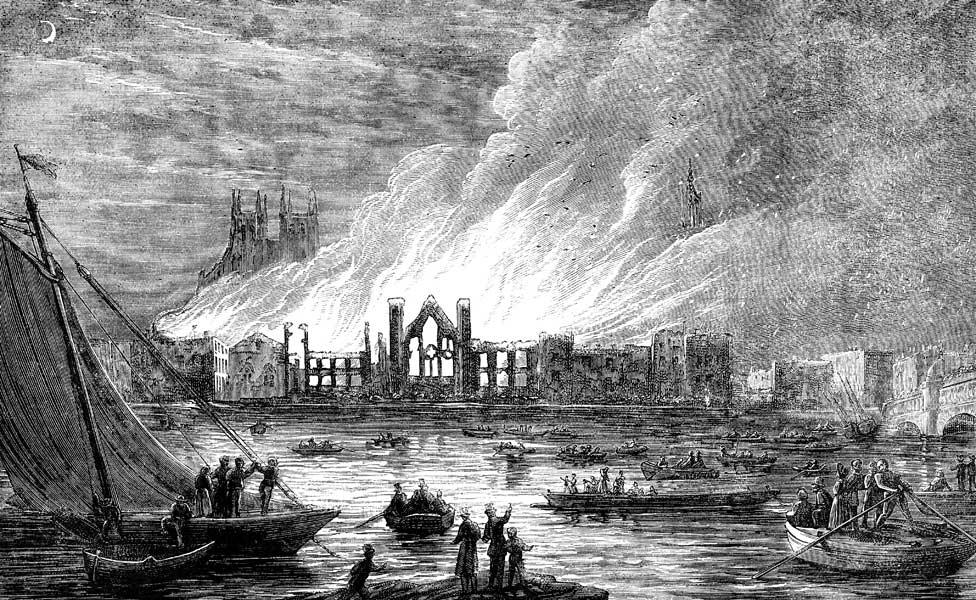
A decision to burn the obsolete tally sticks in 1834 nearly destroyed the Palace of Westminster
To celebrate, it was decided to burn the sticks - six centuries of irreplaceable monetary records - in a coal-fired stove in the House of Lords, rather than letting parliamentary staff take them home for firewood.
Burning a cartload or two of tally sticks in a coal-fired stove is a wonderful way to start a raging chimney fire.
So it was that the House of Lords, then the House of Commons, and almost the entire Palace of Westminster - a building as old as the tally stick system itself - was burned to the ground.
Perhaps the patron saints of monetary historians were having their revenge.
Tim Harford writes the Financial Times's Undercover Economist column. 50 Things That Made the Modern Economy is broadcast on the BBC World Service. You can find more information about the programme's sources and listen online or subscribe to the programme podcast.
- Published12 June 2017
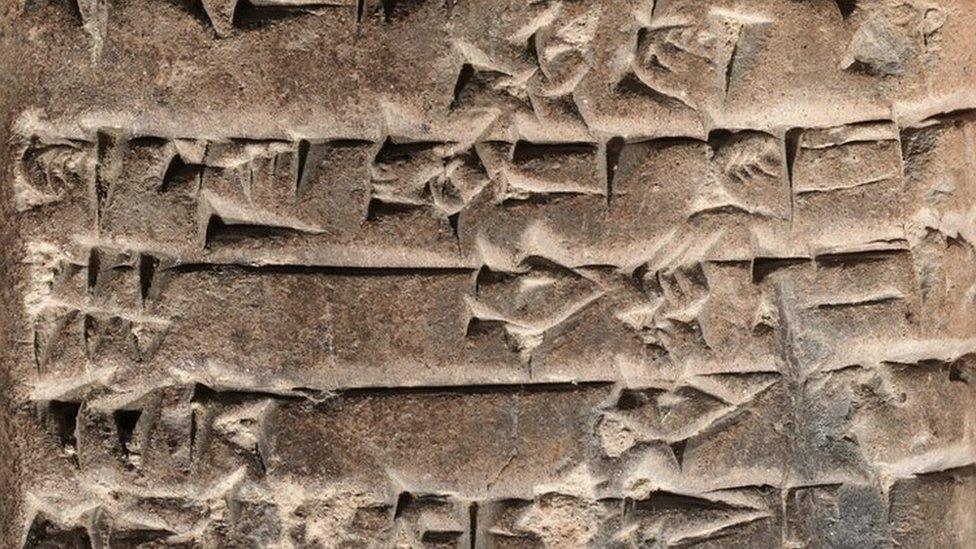
- Published22 April 2016
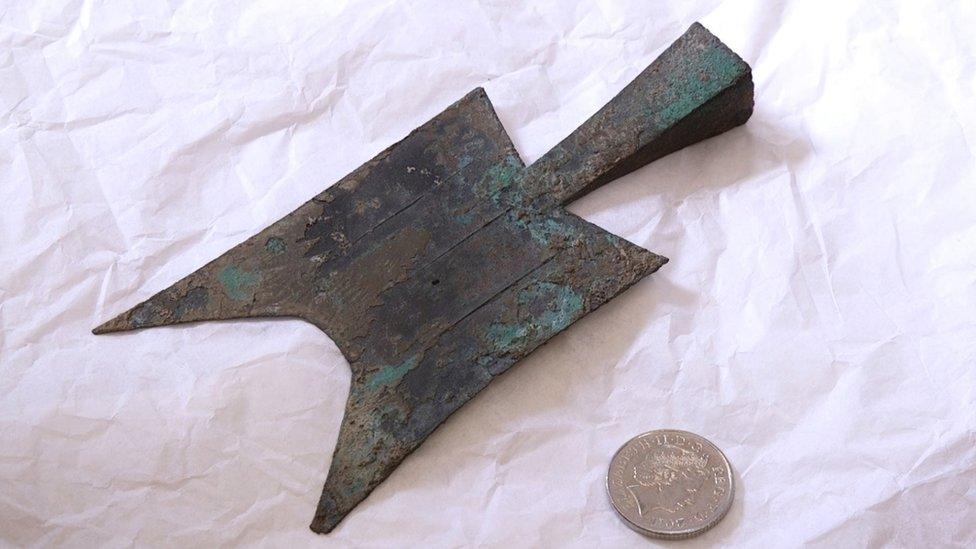
- Published20 April 2016
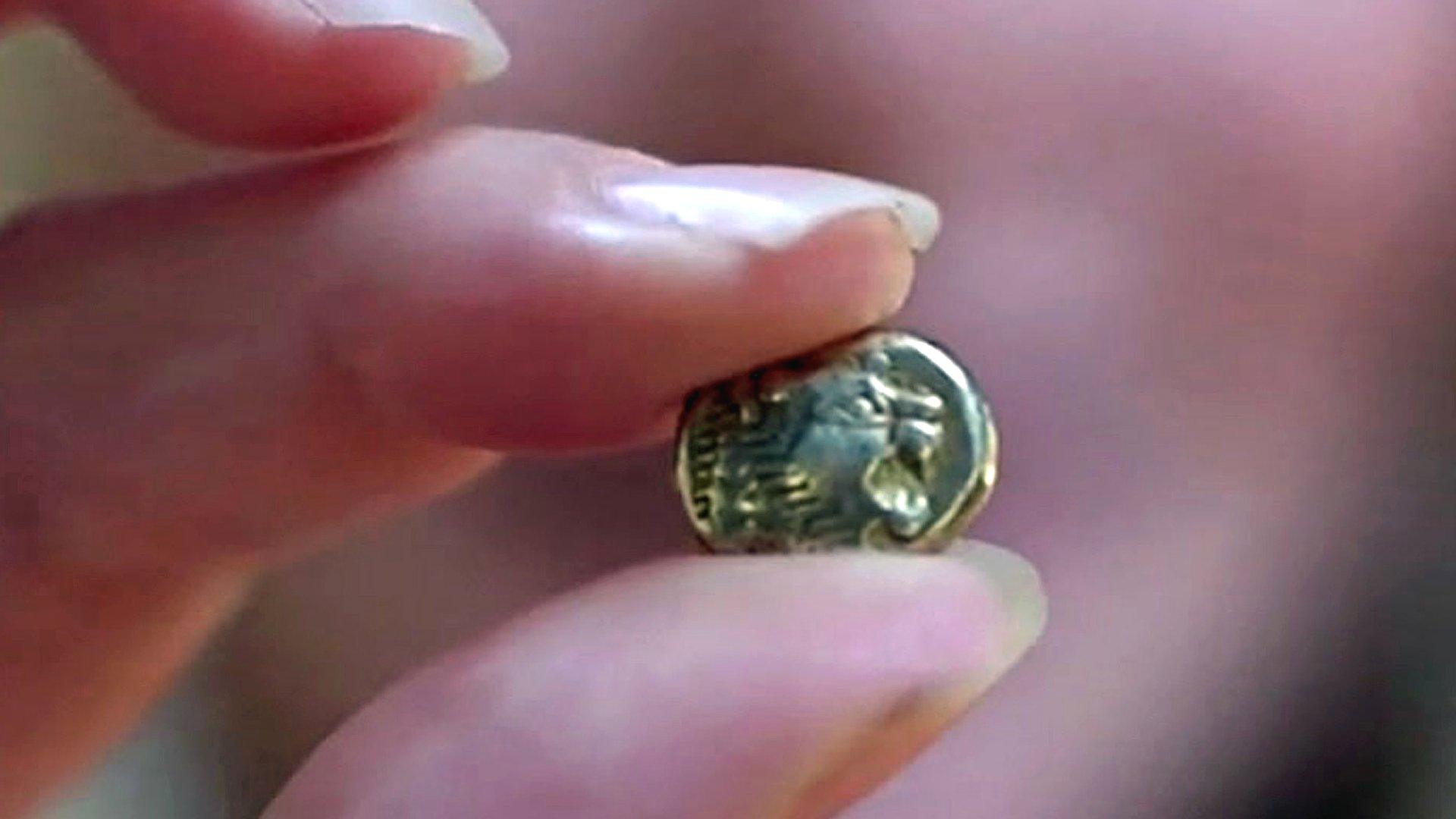
- Published19 May 2019
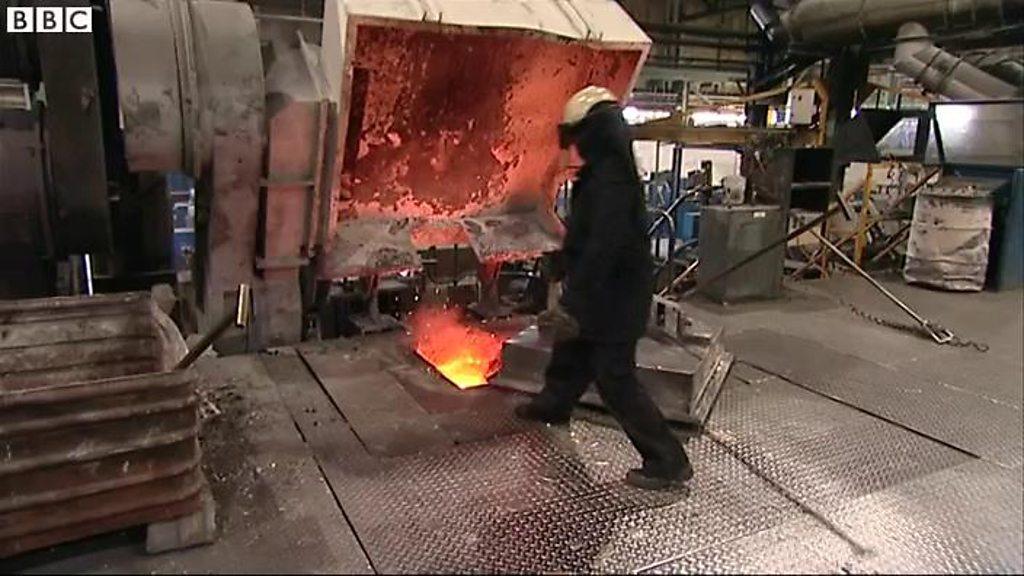
- Published18 July 2012
